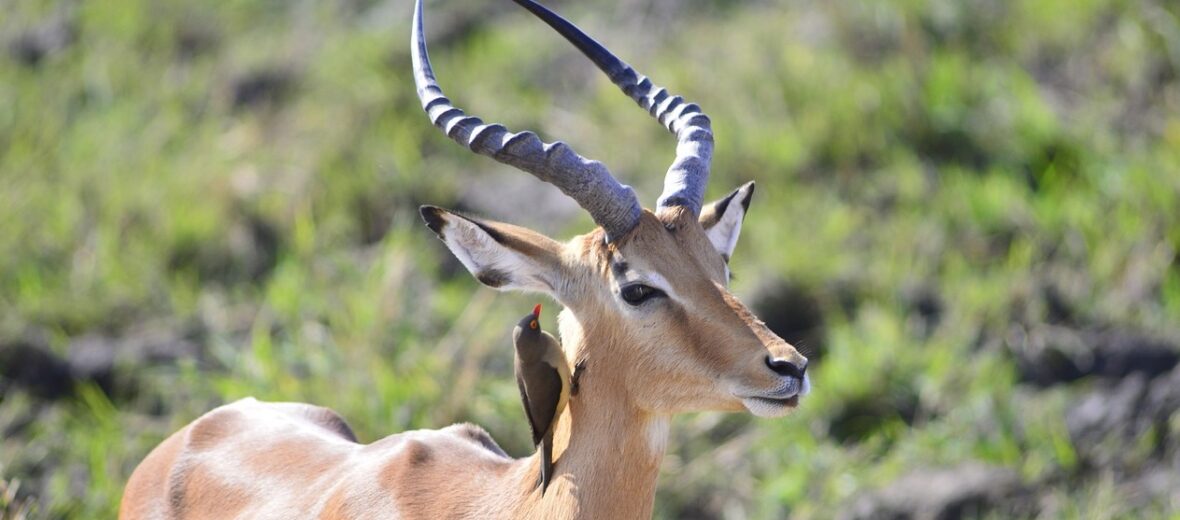
The impala is one of the most graceful and abundant of all antelopes. They can run fast, leap high and far. They are native to more than 10 African countries. They’re also the favored prey of lions, leopards, cheetahs, hyenas, hunting dogs, and humans. They prefer grassland and woodland edges, typically close to water.
First the Stats…
Scientific name: Aepyceros melampus
Weight: Up to 130 lbs.
Length: Up to 4.7 feet
Height: Up to 3 feet tall, at the shoulder
Lifespan: Up to 17 years
Now on to the Facts!
1.) The impala can run up to 37 mph!
2.) They don’t always use their speed and jumping abilities to escape predation, they also use those abilities for fun.
3.) Males are called rams, females are called ewes.
4.) Females have no horns. Males have lyre-shaped ringed horns, up to 30 inches long.
5.) Male impalas produce a scent from a gland on their foreheads to mark their territory. They also have scent glands on their hind legs.
But wait, there’s more on the impala!
6.) Twice as many females are born than males each year.
7.) Female impalas can delay giving birth for up to a month if the weather conditions are not right, such as during the wet season. This is known as delayed implantation.
Did you know…?
They can leap up to 30 feet in length and 9 feet high!
8.) Impalas decrease their chances of attack, like other herd animals, by living in herds. When confronted with a predator, they leap and scatter in all directions to confuse the predator.
9.) Females and their young form herds of up to 100 strong, while males live the bachelor lifestyle in herds of approximately 60.
10.) The name ‘Impala’ come from the Zulu language meaning ‘gazelle’.
Now a Short Impala Video!
Also, check out the Critter Science YouTube channel. Videos added frequently!
Want to suggest a critter for me to write about? Let me know here.



